Expert’s Rating
Pros
- Attractive, premium designs
- In-depth fitness & wellbeing tracking
- Great battery life
Cons
- Inconsistent notification support
- Lack of third-party app support
- Price versus performance
Our Verdict
Little changes in terms of functionality when moving from the GT 3 to the GT 3 Pro, however, the hardware is very capable and the designs premium and unique, helping these Pro models stand out in the wearable space.
‘Pro’ branding has occupied the smartphone space for a few years at this point, but it’s far less prevalent in the smartwatch market. Huawei is one of only a handful of big-name wearable makers to offer up ‘Pro’ branded timepieces, with the first such offering in its Watch GT series arriving back in 2020.
Fast-forward 18 months and the latest entry – or rather entries – in the series are here to continue the approach laid out by the Watch GT 2 Pro, namely in their use of new design aesthetics, enhanced by premium materials.
The most obvious difference between the previous Pro and this generation is that there are now two variants to choose between, offering more choice from what is – probably now more than ever before – one of Huawei’s most important consumer product categories on the global stage.
Design and build
- 46mm titanium body or 43mm ceramic body
- Dive-proof up to 3ATM
- User-replaceable bands
The Watch GT 2 Pro came in a single 46mm casing size, but with the GT 3 Pro series, as with the standard GT 3 line, you now have the option of two sizes to choose between. Both GT 3 Pro models are a fraction larger than their vanilla counterparts but the main differentiator isn’t size, it’s materials.
2020’s GT 2 Pro traded a stainless steel casing for a titanium one and the larger 46mm (46.6mm) GT 3 Pro follows suit. In fact, the design of the 46mm model is clearly informed by its predecessor, with the main difference being the shrouded lugs that angle away sharply from the flat front, at about 45°. It’s a distinct enough adaptation that sets the 46mm GT 3 Pro apart from both its predecessor and the majority of the other smartwatches out there, without feeling over-engineered.

Alex Walker-Todd / Foundry
While the titanium-bodied GT 3 Pro is a natural evolution of the previous Pro-branded Watch GT, the smaller 43mm entry is an exciting new addition that comes clad in a material that, in the context of the industry, is reserved almost exclusively for the luxury watch market: ceramic.
The strange caveat to the GT 3 Pro as a pair of timepieces is that your preferred material is also tied to casing size. As such, for those unsure whether the Huawei Watch GT 3 Pro Titanium Edition or the Watch GT 3 Pro Ceramic Edition is the way to go, make sure you’re comfortable with the design and material at work first and foremost, before buying.
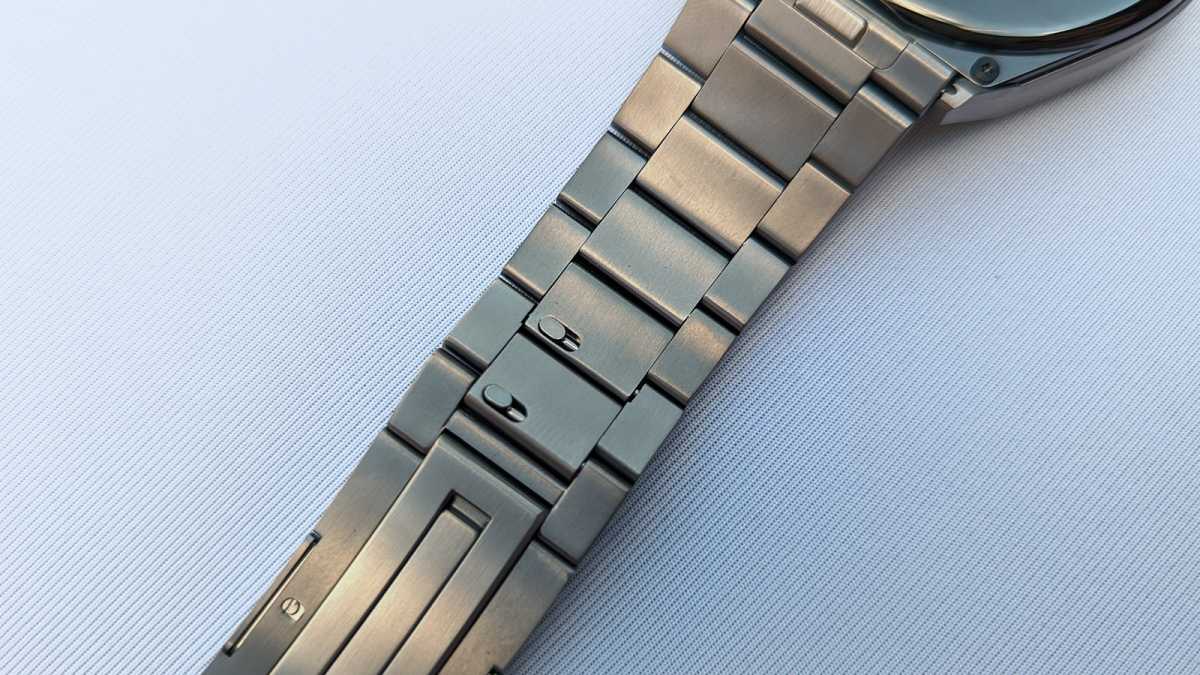
Alex Walker-Todd / Foundry
There’s no denying that both variants of the GT 3 Pro feel a little special in-hand. Not only do they both offer distinct styling but the use of titanium and ceramic across both models also comes with a few additional benefits: these materials are markedly harder wearing compared to stainless steel, hypoallergenic, corrosion-resistant, and impressively lightweight.
In this particular instance, both GT 3 Pros are a little heavier than their vanilla siblings but neither feels particularly cumbersome or uncomfortable to wear.
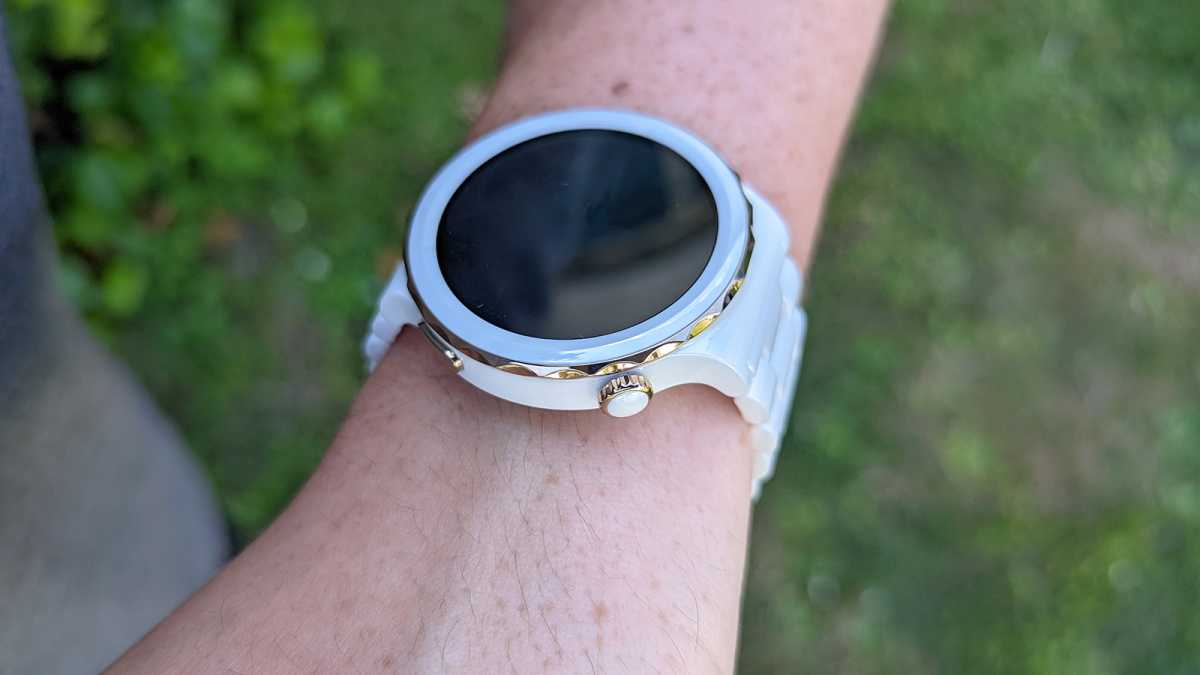
Alex Walker-Todd / Foundry
At a glance, the finish of the Ceramic Edition (which only comes in white) could be mistaken for shiny plastic but boasts a unique lustre when held against the light, not to mention polished ceramic is significantly more resistant to scratches and scrapes compared to plastic (although it is prone to chipping and cracking if not looked after).
While the form of the Titanium Edition looks like a dressed up standard 46mm GT 3, the ceramic model sports a markedly different design compared to the 42mm GT 3, ditching the curved-edge cover glass for a flat front accompanied by a distinct seashell patterned bezel, rendered in gold or silver, depending on the strap you opt for at purchase. That metal accent also extends to the rotating crown and button, found on the right side of the watch’s body too.
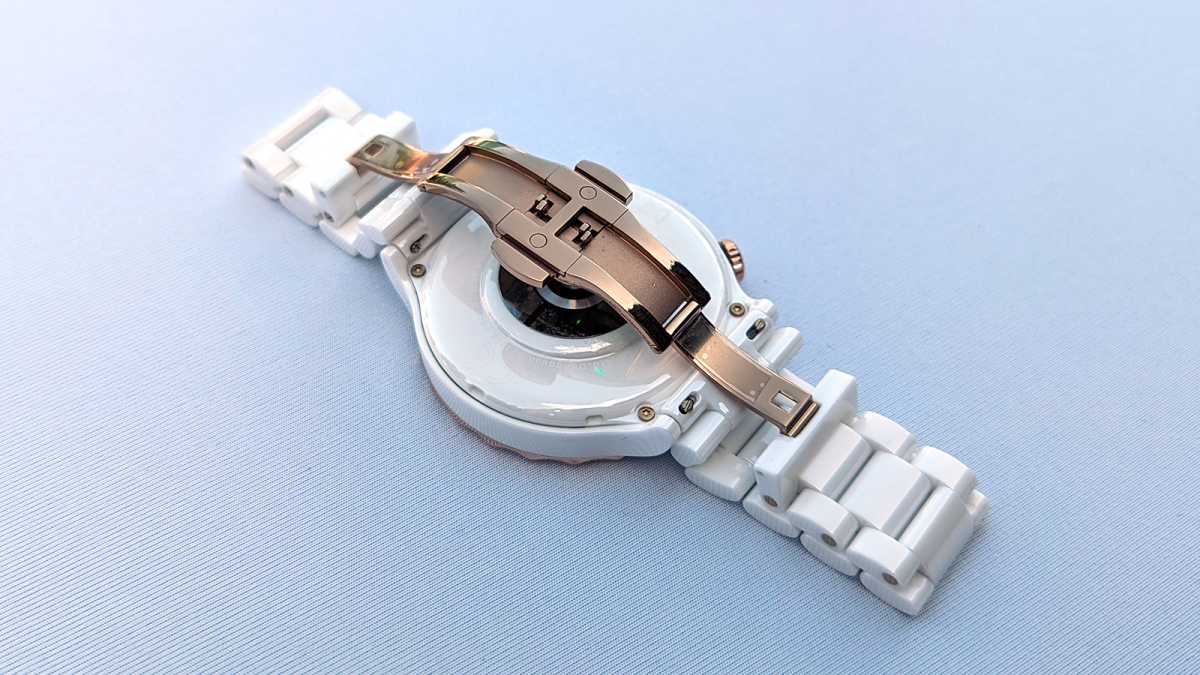
Alex Walker-Todd / Foundry
Speaking of straps, there are two variations of the Ceramic Edition, one with a white leather strap (where the casing features silver accents) and one with a ceramic link strap, sporting an elegant butterfly clasp and (along with the casing) gold accents.
As for the Titantium Edition, there are three strap options to choose between: black fluoroelastomer, grey leather, or a titanium link strap. Unlike the Ceramic Edition, where a tool is included in-box, both the strap and the individual links on the titanium link band offer tool-less adjustment, with spring-loaded pins that are designed to make the act of removing or adding links easier. While it is simpler, the process is still tricky, with shorter nails making the process particularly challenging.

Alex Walker-Todd / Foundry
Like the last Pro, sapphire crystal protects the display and a ceramic back also features across both versions of the GT 3 Pro, with the underlying hardware offering similar durability to the standard model. Huawei has, however, upgraded the line’s water resistance, making these somewhat unique in the smartwatch space by being dive-proof up to 30m.
Display and audio
- Circular AMOLED display with 326ppi
- Dynamic watch faces for day & night
- Integrated microphone & speaker
Behind that impressively resilient sapphire crystal lies either a 1.43in or 1.32in circular AMOLED display (depending on casing size), with the same 326ppi pixel density as the last few generations of Huawei smartwatch (across both the GT series and numbered entries like the Watch 3), as well as rivals like the Apple Watch.
It’s a wonderfully bright, colourful and consistently responsive display that’s easy to see and comes paired with a smattering of customisable controls. It features a well-timed tilt-to-wake setup by default (which is good, as there’s no option to adjust sensitivity anyway) as well as controls for brightness (including auto-brightness), sleep, and screen-on times.
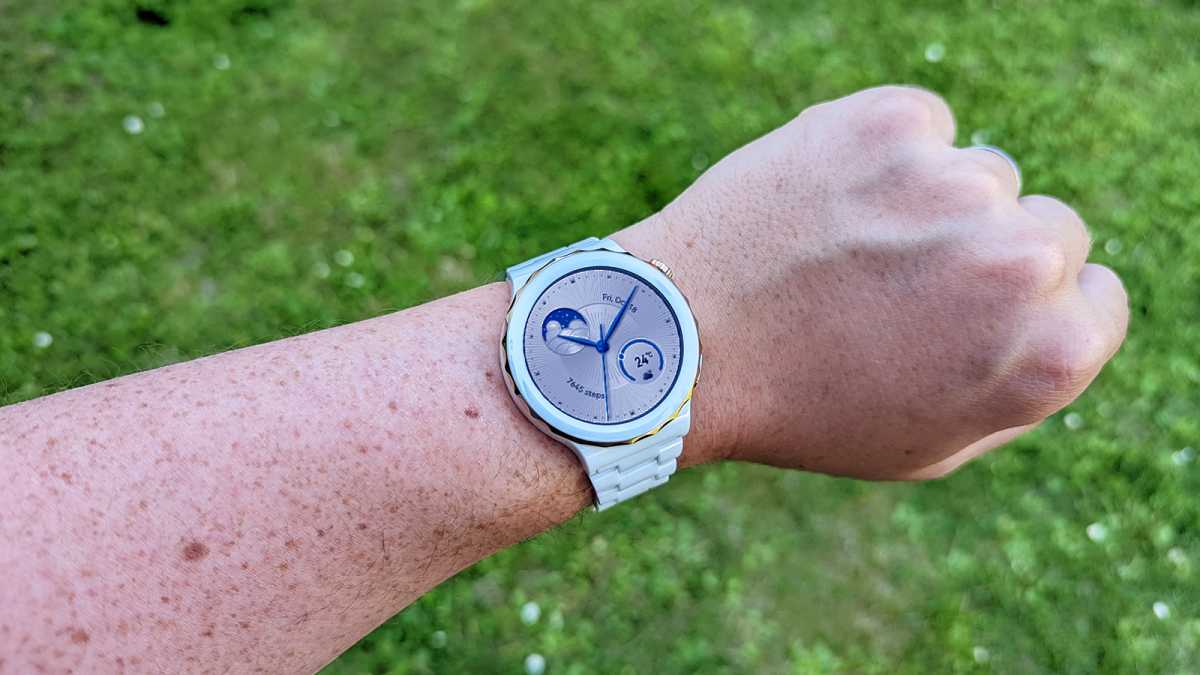
Alex Walker-Todd / Foundry
Huawei has made a concerted effort to tailor the plethora of watch faces included on the GT 3 Pro to feature dedicated always-on display alternates that still offer a similar style and layout to their standard appearance, a level of attention to detail that other smartwatch makers should take note of.
Some of the watch faces also support customisable complications for metrics like battery life, heart rate, and weather, with the UI also altering you to which watch faces might draw more power than others, which is a small but useful consideration that, again, would be good to have available on rival wearables.
Like the GT 3 line, the GT 3 Pro also features an integrated speaker and microphone, with the former serving up surprisingly clear sound that can be heard over general din (such as road noise), making it usable for hearing progress updates during workouts while out running, for example.
With onboard storage facilitating offline music playback, you can also play tunes through the GT 3 Pro’s speaker and they don’t sound terrible but it’s far from the ideal way to enjoy tunes or podcasts, so Bluetooth earbuds are probably the smart course of action.
As for the microphone, it’s mainly used for on-wrist calls or, if you’re paired to a Huawei smartphone specifically, interaction with the user experience’s assistant Celia. Quality is again functional (provided it’s not too noisy in the background) and should only be used if your phone is out of reach.
Software and features
- HarmonyOS
- UI borrows from Wear OS and watchOS
- Varied notification quick-action support
Running on Huawei’s own HarmonyOS 2.1, the Watch GT 3 Pro offers a practically identical user experience to the other GT 3 watches, along with the company’s first HarmonyOS watch, the Huawei Watch 3.
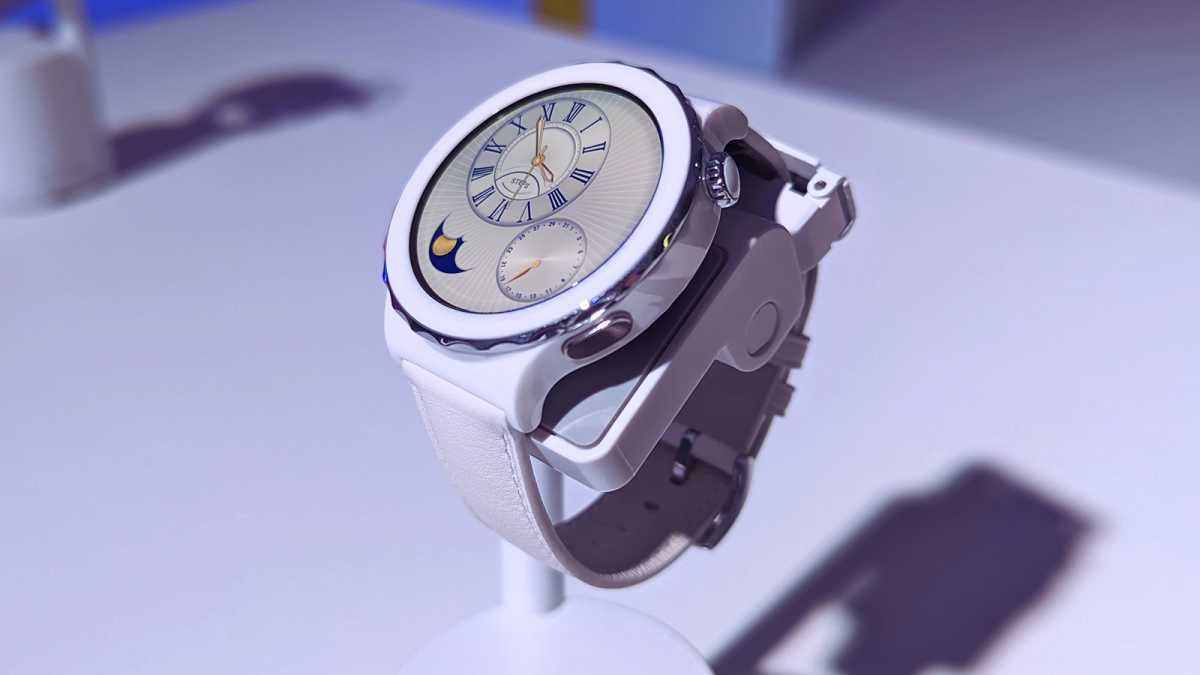
Alex Walker-Todd / Foundry
Harmony’s wearable guise borrows from similar platforms, like Google’s Wear OS, with swiping down, left, up, and right summoning quick settings, widgets, notifications, and the watch’s assistant, respectively. Meanwhile, by default, pressing the rotating crown brings up a decidedly watchOS-like apps grid (although a list view is also available).
While it makes for a generally pleasnt and rich experience overall, there are some quirks to be aware of, like inconsistent quick actions on notifications, such as conversations from various different social apps you may have. Meanwhile the voice assistant only functions if you have the GT 3 Pro paired up to a compatible Huawei phone, making its ever-present position to the left of the main watch face a little annoying if you’ve paired it to another manufacturer’s Android phone, or an iPhone.

Alex Walker-Todd / Foundry
The GT’s line’s standing beneath the Watch 3 means that although the Pro series offers some of the most premium hardware from Huawei’s current smartwatch portfolio, top-tier features like its on-wrist AppGallery app store and eSIM functionality (for phone-free calls and data usage) aren’t part of the equation here.
Fitness and tracking
- Tracks 100+ sport modes
- New free-dive tracking
- ECG & NFC are market specific
Fitness is where the GT line places its focus, with a familiar line-up of sport-centric features as found on the vanilla Watch GT 3. The GT 3 Pro is equipped to track everything from your steps to your sleep (including sleep stages like REM), with the likes of heart rate, stress, blood oxygen and skin temperature too.
In some markets (namely Huawei’s homeland of China) ECG functionality is also on the table (along with NFC), however approval from local medical bodies is required for this feature to be enabled everywhere the GT 3 Pro has launched (suggesting the functionality could be ‘unlocked’ in markets where it isn’t currently available were Huawei to seek the relevant approval).

Alex Walker-Todd / Foundry
Pair all this with an improved TruSeen 5.0+ sensor for greater accuracy when logging metrics like SpO2 and the GT 3 Pro offers some of the most comprehensive tracking of any smartwatch currently out there.
Via the companion Huawei Health app, that data comes dressed with additional insight too. Sleep data, for example, is complemented by recommendations on how to improve your habits for more positive results (or simply to tell you you’re already on the right track).
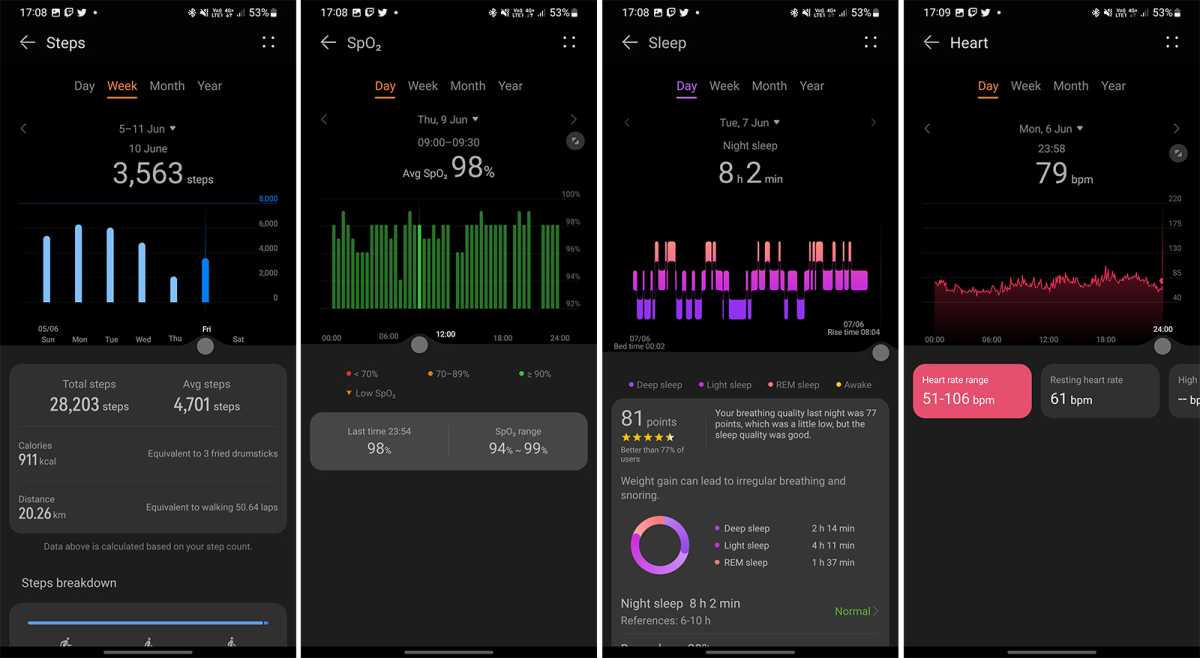
Alex Walker-Todd / Foundry
Along with the upgraded hardiness of this latest Pro series, Huawei has also added to the existing 100+ sport modes that the GT 3 line already offered by way of dive tracking that can log attributes like dive depth and curve; expanding on an already impressive assortment of trackable activities.
Where Huawei hasn’t quite ventured with any of its wearables is towards the realm of supplementary activity data and insight, such as nutritional intake, something typically found on more advanced multisport watches from brands like Polar.
Performance and battery
- Responsive user experience
- Convenient, quick charging
- Strong longevity
Given the GT series’ marginally lower standing compared to the likes of the Watch 3, I was expecting middling performance from the user experience, especially as that was what the company’s previous Lite OS-powered watches often doled out.
In practice, the GT 3 Pro proves pleasantly snappy, with simple UI animations no doubt helping the watch remain smooth and responsive to a degree approaching premium smartwatch market leaders like the Apple Watch Series 7 and Samsung Galaxy Watch 4 family.
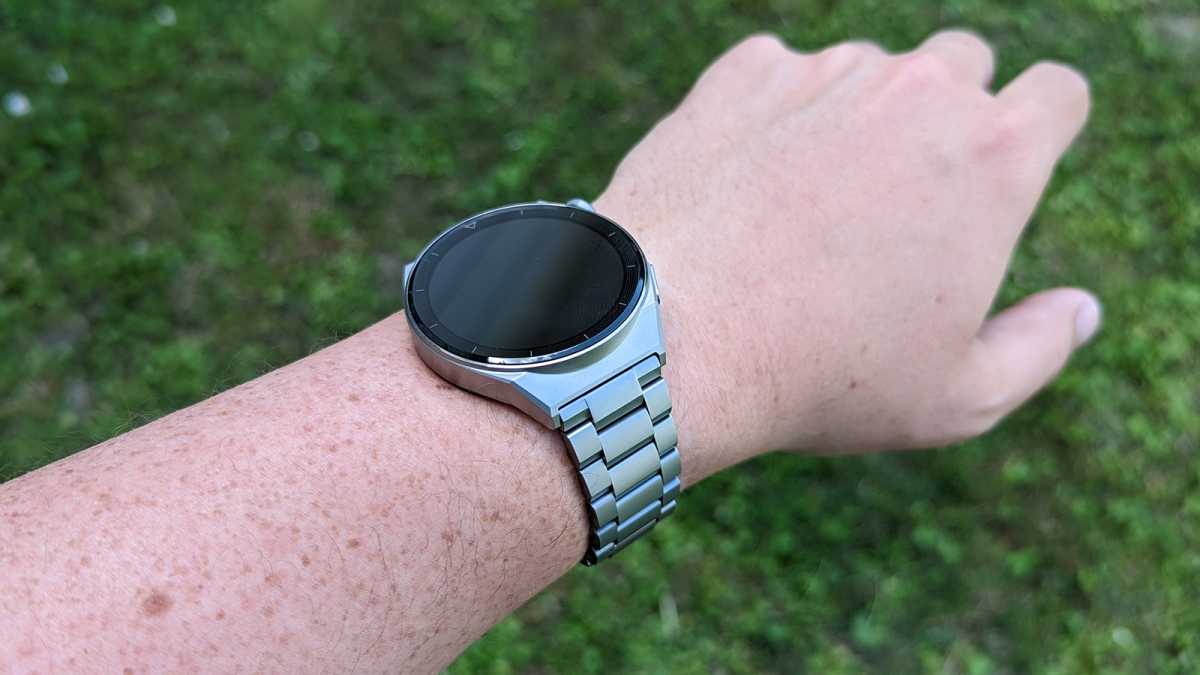
Alex Walker-Todd / Foundry
Interaction via the touchscreen, rotating crown, and side button seldom proved problematic, with only the occasional delay or stutter as I moved around the UI.
As for battery life, the two different casing and display sizes result in differing battery longevity. Huawei quotes up to 7 days of ‘typical’ usage from the 43mm Ceramic Edition and up to 14 days from the 46mm titanium model and in practice, that proved right on the money, where previous Huawei watches have often fallen a day or so short of the company’s claims.
Even with 30 minutes of GPS-based tracking a day, the 46mm Titanium Edition should still serve up eight days of what Huawei calls ‘heavy use’, which is impressive, to say the least.
If you’re new to wearables, small changes in usage – like tweaking screen brightness or timeout, enabling GPS while going for a run, or turning constant heart rate tracking on or off – can all have sizeable impacts on a watches longevity and that’s just as true here. Still, Huawei has found a superb balance of fitness features, software fluidity and battery life that’s tricky to find elsewhere.
Recharging the Ceramic model brought it to 75% charge in just 30 minutes, with a full charge in under an hour, while the Titanium model takes a little while longer. Charging takes place via a familiar magnetically attachable wireless charging puck that attaches to the watch’s ceramic back in any orientation.
Charging is, for the most part, painless, although the Ceramic Edition did have a tendency to complain about needing the back of the watch to be cleaned to allow for charging consistency, even when the watch was box fresh.
Price and availability
Both models are available to buy direct from Huawei’s website (Titanium Edition/Ceramic Edition), with some regions also offering availability through local retailers, such as Amazon (Titanium Edition/Ceramic Edition) and Currys (Titanium Edition/Ceramic Edition) in the UK.
Perhaps one of the most divisive aspects of the Watch GT 3 Pro is its price. For a start, unlike the standard GT 3, the ceramic bodywork of the smaller 43mm Pro renders it more expensive than its larger titanium-clad counterpart, while the choice of strap that you pair with your preferred GT 3 Pro can up the cost even more.
Titanium model pricing:
- Huawei Watch GT 3 Pro Titanium Edition (46mm) w/ fluoroelastomer strap: €369/£299
- Huawei Watch GT 3 Pro Titanium Edition (46mm) w/ leather strap: €369/£299
- Huawei Watch GT 3 Pro Titanium Edition (46mm) w/ titanium strap: €499/£429
Ceramic model pricing:
- Huawei Watch GT 3 Pro Ceramic Edition (43mm) w/ leather strap: €499/£429
- Huawei Watch GT 3 Pro Ceramic Edition (43mm) w/ ceramic strap: €599 (or €699 in some regions)/£499
In both cases, the link strap of each model’s respective signature material makes for the priciest pairing, while the black fluoroelastomer strap available with the 46mm Titanium Edition is among the most affordable offerings in the range (and coincidentally the best option for those who want to work out while wearing their GT 3 Pro).
The silver lining for those put off by the price is that Huawei doesn’t use a proprietary strap design like Apple, so while you can opt for any of the company’s own EasyFit 2 bands, you’re not restricted to them.
Check out our best smartwatch roundup to see what the GT 3 Pro line is up against.
Verdict
When it comes down to it, almost everything that makes the Huawei Watch GT 3 such an accomplished pair of smartwatches is also true with their Pro-branded siblings.
The array of metrics these wearables can track and the first-party functionality afforded to that data is rich and varied, while battery life and performance walk a careful line that ensure a strong balance.
Sure, HarmonyOS has its quirks and some of the more nuanced functionality of these watches remains walled behind Huawei exclusivity but the underlying experience is arguably brilliant, albeit familiar.
Considering the level of functionality on offer the GT 3 Pro line is expensive, but there just aren’t many alternatives willing to toy with such luxurious materials, meaning there’s little else out there to choose from.
The Huawei Watch GT 3 Pro offers itself up to those who want luxury and connectivity in their timepieces, without having to fork our four figures for the closest alternative in entries like Hublot’s Big Bang E or the newest Tag Heuer Connected. Even at its most expensive, the Ceramic Edition undercuts Apple’s top-tier titanium-bodied alternative, making it ideal for iPhone users who favour Huawei’s circular stylings over Apple’s squircles.




